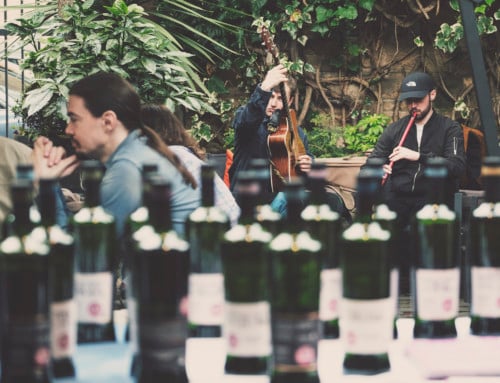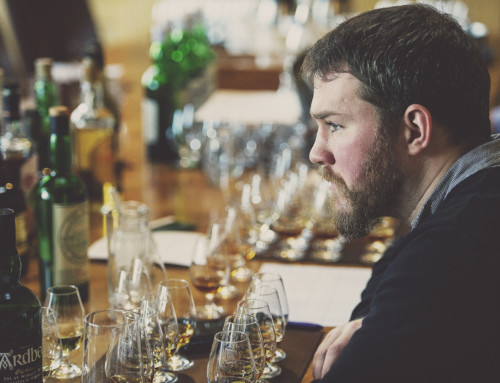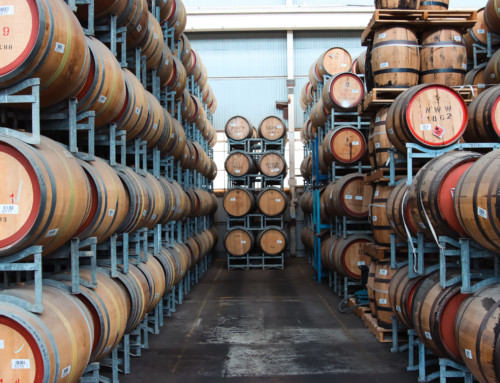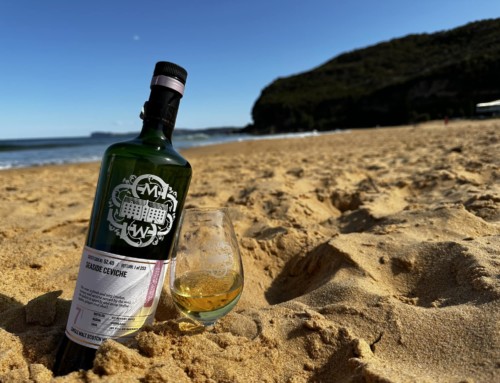5 mistakes that most whisky drinkers make and how to avoid them:
I remember a few years ago reading an article which was entitled something similar, about the ‘mistakes’ that whisky drinkers make, but instead of addressing actual mistakes, it called out ‘snobbery’ and ‘elitism’ to the point of just sounding grumpy. This article isn’t that. This is meant to be a light-hearted re-evaluation of my own bias and where sometimes even the most seasoned whisky drinker can still slip…
In my travels as the ambassador for the Scotch Malt Whisky Society, I meet whisky drinkers from all paths, and at all experience levels. First-time whisky discoveries, people trying peated whisky for the first time, people discovering what different casks can do to different spirits, people tasting cask strength Armagnac for the first time, and then of course rather experienced whisky drinkers and those who often like to preach great whisky to others (like me!). We’ve often said that the Society is for everyone: it’s a open door to all who appreciate great flavour experiences at any stage in their journey of discovering great spirits, but sometimes even the most seasoned whisky fanatics make some mistakes that we really should clear up. So here’s five things that even the most seasoned whisky appreciator can still sometimes get wrong:
-
Obsessing over closed distilleries
This is an easy one to start with. I was at a tasting recently of some old bottlings from a private collection of an old friend, and one on taste was a 1971 Port Ellen. It’s Port Ellen everyone, it MUST be good, right? It’s a malt drinkers holy grail, that rare Islay gem of closed distilling history. Truthfully, it was pretty woeful. Maybe it was a mixture of ‘old bottle effect’, maybe it was a poor run of the stills, maybe it was just a tired old cask that didn’t do the spirit much good. Who cares, it wasn’t good in the glass and that’s where it counts. It was a distillery that closed in 1983 due to plummeting demand of Scotch whisky, and by some accounts it was some of the least consistent spirit output in the Diageo folio of distilleries (then known as DCL) at the time. So is it always incredible on your palate? Is it the golden mothballed elixir of Islay? No, not always. Sometimes though it just might be. In a blind lineup I’d challenge anyone to often pick Port Ellen apart from an older Caol Ila sometimes! My point here is that even seasoned whisky drinkers sometimes overly-obsess over closed distilleries and fanciful stories told behind rose-tinted glasses of ‘better times’, not because their spirit was fantastic, but purely because of their scarcity and historical romance. Sometimes it was better back then, sometimes it wasn’t. Just like today. How to avoid this? Explore the lesser-known non-superstar workhorse distilleries, lesser-seen codes, and focus on what’s happening right in the glass in front of your nose, and leave the fluffy romantic stories for the marketers.
-
Preferencing ultra-high proof over lower
It may seem a bit weird me writing this one as everything the Society does, bar our experimental member approval bottlings like Exotic Cargo or Peat Faerie, is bottled at natural cask strength. I am basically personally a cask-strength fanatic at this point, as a higher proof equals a higher flavour and one with all the naturally occurring oils and fats and tannins in the glass, plus I prefer to water down my own whisky rather than have the tax man do it. However, even seasoned whisky nerds often fall trap to seeing a really high proof and preferencing that against something a bit lower proof. We’ve bottled single cask whiskies and other mature spirits at the Society now ranging from 40.0% natural cask strength (Cask 35.70) all the way up to 81.3% (R5.1) and everything in between. If you’re picking entirely off proof, you’re playing it wrong. Cask strength is, in my humble opinion, always a better pick than a pre-watered down whisky, but let me be clear about this one: natural cask strength at 78.5% ABV isn’t by some magic automatically “better” than natural cask strength at 48.6%. I see this quite often on social media where people are basically going full headless-chook over the finished proof. Most of our casks at the Society are bottled between 55-65% ABV, as natural cask strength. Some will be lower, some will be higher. There are a multitude of factors that determine the finished proof of a cask, including but not limited to age, barrel size, climate, spirit type, etc. A higher finished proof doesn’t necessarily mean a ‘better’ spirit, just different.
-
Still focusing too closely on colour

What does a colour tell you about how a whisky will taste? Absolutely nothing. Are whiskies that are pitch-black in colour the richest most sherried most intense flavoured drams? Nope. Do whisky drinkers still get fooled by colour in the glass over and over again? Yes! Let’s rewind a moment. Every Society cask is bottled as natural colour, meaning no e150 / distillers caramel is added to the end product. If you have a favourite core-range offering from a blender or distillery, I’d say it’s a very good chance it’s artificially coloured. Big (and some small) distilleries and blenders do this for one reason: consistency. It makes the spirit look uniform across batches, but also makes it look often darker, bolder, richer, sweeter, etc. I’m not here to begrudge them for doing so. Consistency of output for a big whisky brand is absolutely paramount to their success globally. Wine marketing has successfully pulled off selling colour as a strength, just as whisky does. But let’s get back to whisky without e150 for a moment: even then, it’s easy to obsess over colour. I’ve had some whiskies that were positively pitch black with a hint of ruby red in the glass only to be severely disappointed with the hot mess they were, and I’ve also had some whiskies that were almost vodka coloured that tasted superb. Insist on natural colour, but don’t be conned by the thinking that darker automatically equals better. We recently featured a cask from distillery 46 at a Society event that had spent 24 years in a 1st fill Oloroso butt, yet it wasn’t even a shade darker than a refill bourbon barrel. It tasted rich, sherried and delicious, but it didn’t have that dark burnished red hue so many crave. Some of this also comes down to nerding out over cask types, so…
-
Obsessing over cask type
“I only drink sherried whisky”, “the best casks are 1st fill sherry butts”, “the best whisky ever comes from french oak only”, “refill ex-bourbon hogsheads aren’t worth drinking”. I say without a word of a lie, that I’ve heard those four phrases said at tastings and events, without any sense of comedic intent. I think the same thing every time when I hear them of “well you sure are missing out!”. I’m reminded of a Society cask, 36.96 ‘Chocolate cake cookie’, from a couple of years ago. It was by far one the most exciting single casks I’d ever had from the Society, yet the cask stats really didn’t leap out. It was 9 years old, it was 1st fill ex-bourbon barrel, yet it was exactly as our panel described: it was like biting into a chocolate cake cookie in your mouth. It was stunning. It was far and above a tremendous experience to behold, to share, and to be a part of. What it wasn’t however was some superstar cask detail. It didn’t spend years slumbering in some ‘forgotten’ sherry butt, nor did it come from a distillery that is celebrated through heavy marketing, but it did deliver in the glass and in the time and place, and that’s all that matters. Time and place. Sherry casks aren’t “better” than ex-bourbon barrels or hogsheads, they are just different and impart a different profile to a spirit over time. I have some friends who I’m certain will want to have fisticuffs with me over that statement…

-
Still using age statement as the sole determiner of quality
At the Society, we think an age statement printed on the bottle is important. It delivers transparency of offering, and keeps an honest approach to what you’re enjoying in the glass. I don’t however believe that focusing solely on age statement as a determiner of quality or complexity is correct. I was lucky enough to be part of a brand and branch session earlier this year at the Vaults of Leith and there was five whiskies presented to all of us in a blind tasting session. The third whisky in the lineup was dark, rich, and truly thrilling whisky. Was it a Vaults collection from 39? from 24? from 1? Nope, it was Cask 136.2 recently added to the list, and it was a whopping 3 years old from a 1st fill Oloroso hogshead. Only just legally able to be called Scotch whisky. Incredible balance and complexity. 3 years old. It also just won the Gold medal in the Independent Bottler’s Challenge for 2018. What a cask (and yes we’re releasing it soon for members in Australia). Would I dismiss it for being so youthful in the number? No way. I love the 30+ year old casks we bottle, I love the 3+ year old casks. Both remarkable quality, just different. Don’t use the age statement to be fooled into thinking that a 43 year old is objectively better than a 3 year old. They are both just different and offer different drumming experiences, no matter how you enjoy your dram.
Slainte!
Matt Bailey, SMWS National Ambassador








